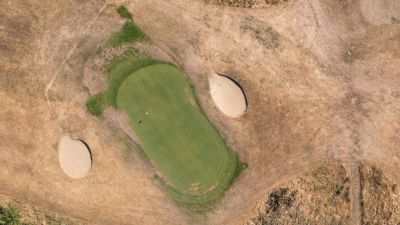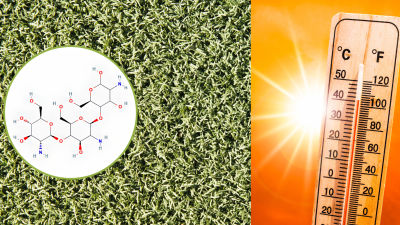13.05.2024
Correct management of thatch as a key challenge for greenkeepers
Incorrect thatch management can result in poor quality, soft, poorly rooted and susceptible to pathogenic fungal attack, so this management should be a priority for greenkeepers.
Thatch is a layer of undecomposed plant matter, living or dead, located between the aerial parts of the turfgrass and the soil surface. This layer can negatively affect turfgrass health and metabolism by disrupting the exchange of gases and water between the atmosphere and the soil. In addition, it creates a microclimate favourable to fungal diseases such as Sclerotinia homoeocarpa and Rhizoctonia spp. thus facilitating their spread. The dense layer of thatch also reduces the effectiveness of fungicides and other crop protection products.
More, thatch contributes to loosening the anchorage of the turf by retaining water, which encourages root growth on the surface. The result is a less stable turf that is more susceptible to deterioration. Shallow root systems, developed due to excessive thatch, make the turf more vulnerable to damage caused by extreme heat and drought.
The main factors contributing to thatch formation are:
- Excessive nitrogen fertilisation, which encourages vigorous growth of the aerial part of the turf. When mown, this contributes to thatch accumulation.
- Low soil conditions and acidic soil pH, which can inhibit the activity of soil micro-organisms and slow down the decomposition of organic matter.
- Infrequent mowing, mowing too high and leaving grass clippings on the field after mowing.
To mitigate or reduce thatch, greenkeepers can apply a variety of agronomic practices designed to enhance the decomposition of organic matter. Preventive techniques include
- Fertilisation
- pH adjustment by liming
- Soil aeration
- Maintaining a carbon/nitrogen ratio of 25-30:1
For curative treatments, mechanical removal of thatch can be carried out by aeration or vertical cutting. Another effective technique is coring. In addition, microbiological solutions can be used to enhance the decomposition of thatch. Examples of such solutions are:
- Bacillus species: These bacteria can break down organic matter, enhancing the decomposition of thatch.
- Rhizobacteria: Beneficial bacteria that can improve soil health and help break down organic matter.
- Fungal enzymes: Some fungi produce enzymes that help break down cellulose and other mulch components.
Applying these microbiological solutions in conjunction with mechanical and agronomic practices can effectively manage thatch and improve overall turf health and stability.
To find out what solutions Soilneo recommends for thatch management, please contact us at suporte@soilneo.com.






